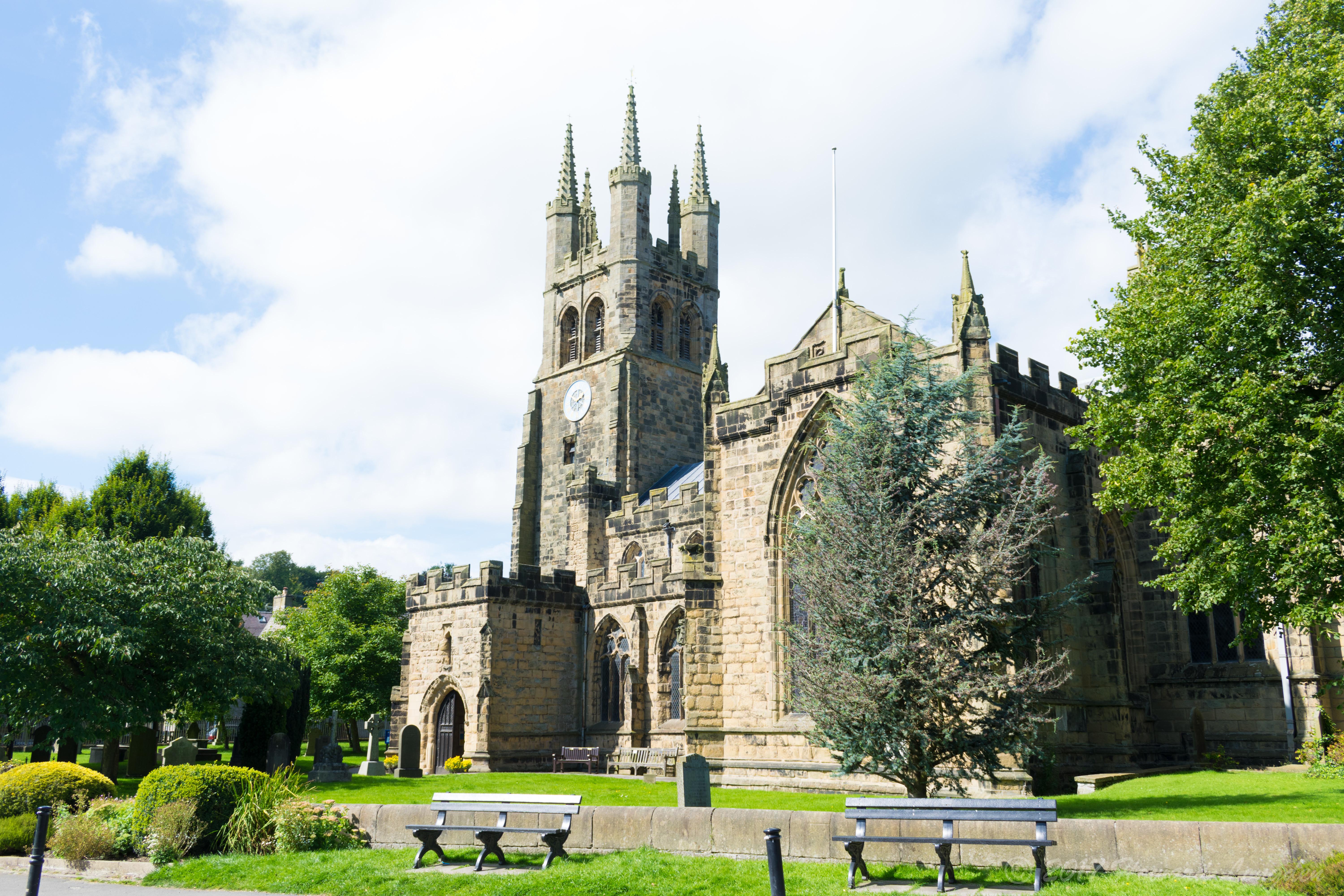Good Shepherd
Wardlow, Derbyshire
The Good Shepherd owes its existence to Revd Samuel Andrew, vicar of nearby Tideswell in the late 19th century.

Why not visit the majestic, 14th century church of Saint John the Baptist (The Cathedral of the Peak )in Tideswell, Derbyshire?
Tideswell, Derbyshire
Started about 1320 and completed soon after 1400 (building was interrupted by the Black Death). The nave, aisles and transepts were begun about 1340 in the Late Gothic style, and the chancel and tower were added at the end of the century in a Perpendicular style. The lovely wooden screen which separates the nave from the chancel is the original, as is the beautiful sedilla by the altar. The centre of the chancel holds the altar tomb of Sir Samson Meverill, a local knight and land owner (1388-1462).
The building dominates the skyline and village of Tideswell and is a significant destination for those with a Christian faith and for a broader population of visitors. Internally, the church has many significant fixtures and fittings, including ecclesiastical carving carried out by the Hunstone family, based locally.
The south transept of the church contains the Lytton chapel and de Bower chapels. One of the original bells, removed in 1928 and known as The Gabriel Bell sits on the floor of the Lytton chapel. The de Bower chapel contains the recumbent alabaster figures of a couple. The north transept houses the Lady Chapel. There are two stone gravestones of women, dating from 1300 and 1375. Here, and in the choir stalls the pews have some superb carvings by Advent Hunstone, whose descendants still worship at the church today.
You are warmly invited to visit the 'Cathedral of the Peaks', a place of worship since 1398.
Wardlow, Derbyshire
The Good Shepherd owes its existence to Revd Samuel Andrew, vicar of nearby Tideswell in the late 19th century.
Taddington, Derbyshire
Described as one of the prettiest and best proportioned churches of the Peak, it stands proud in a small hillside village and one of the highest villages in England.
Eyam, Derbyshire
On a gentle hill in the village of Eyam in Derbyshire’s beautiful Peak District, Eyam is noted for the historical reality of the plague in 1665-66.